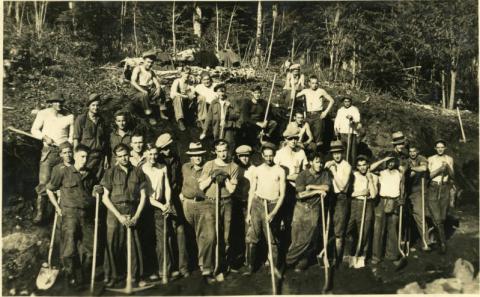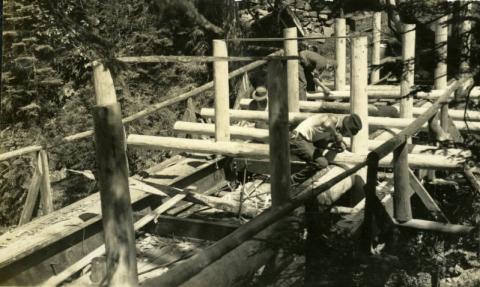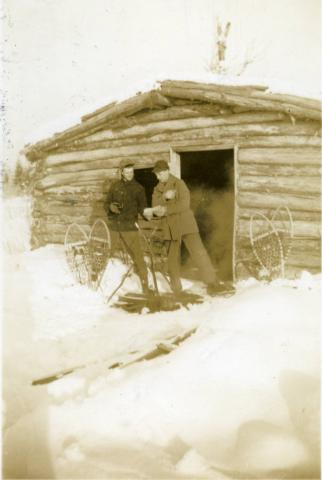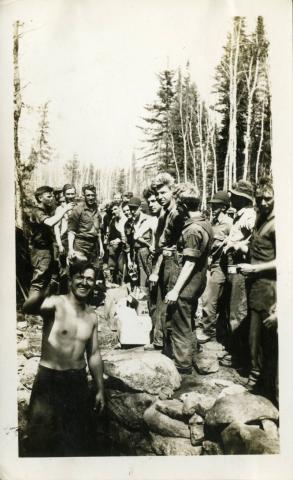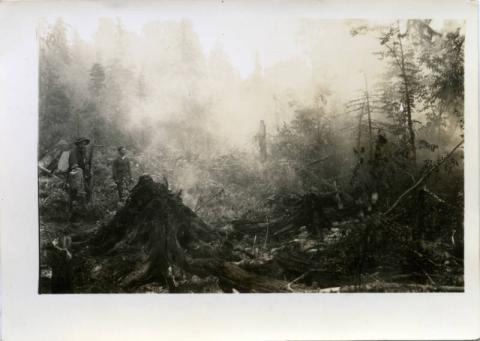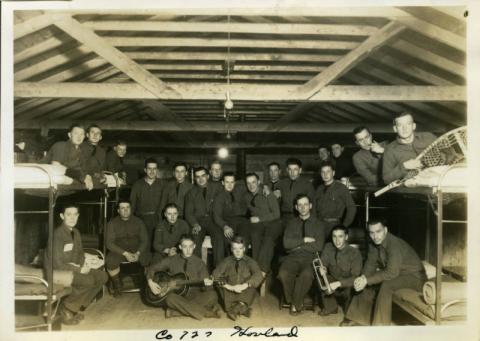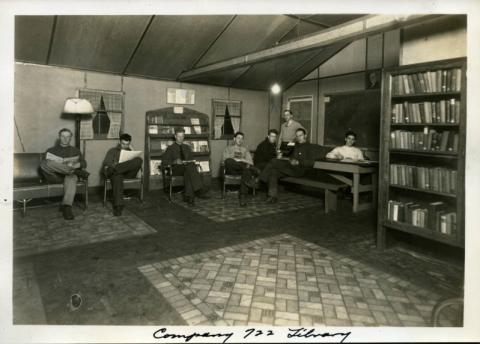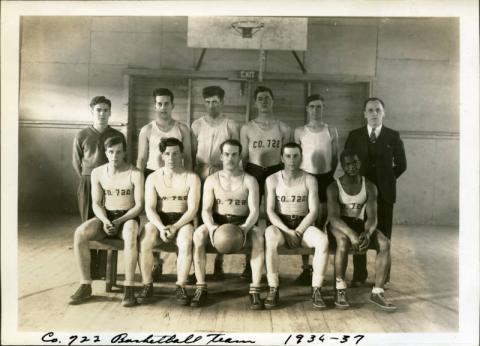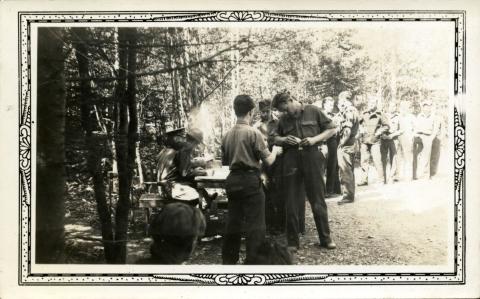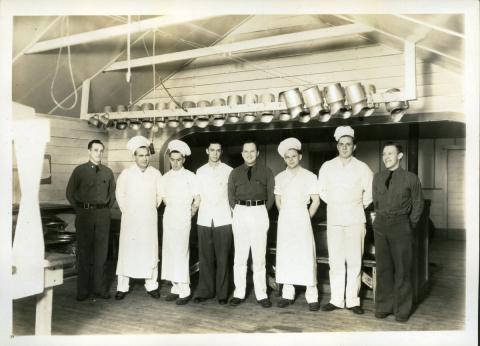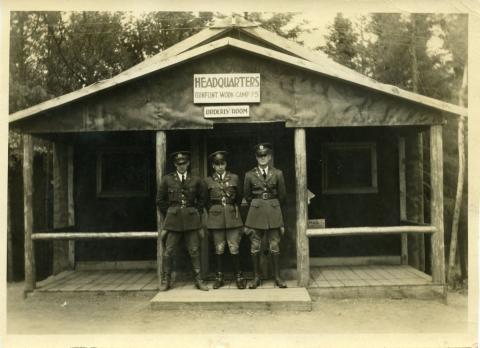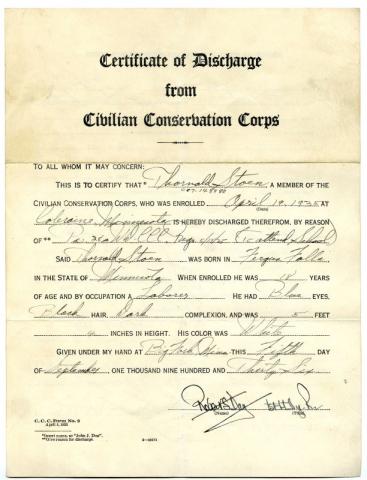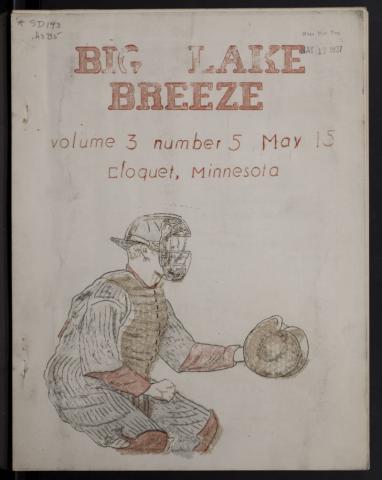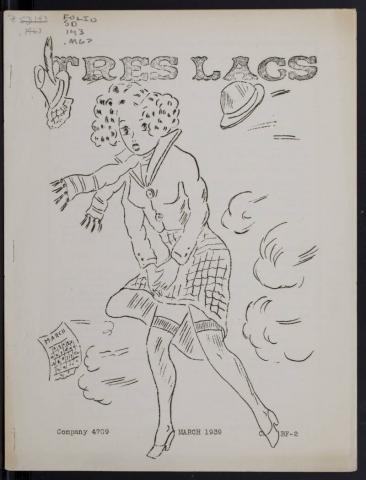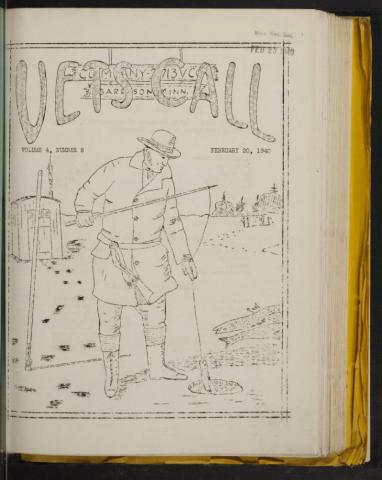Primary Source Set
by Rita Baladad, Librarian, Cooperative Purchasing and Electronic Resources Services, Minitex
Environment Labor Social Issues
Part of the New Deal initiated by President Franklin D. Roosevelt, the Civilian Conservation Corps (CCC) was a work relief program administered through the U. S. Army from 1933 through 1942. Workers were unmarried, unemployed men with a mimimum age of either 17 or 18 and a maximum age that over the years of the program fluctuated between 23 to 28.
Over the span of the CCC program, Minnesota had 148 camps with over 77,000 workers. The Department of the Interior, Office of Indian Affairs created the Indian Emergency Conservation Work (IECW) program, which had a similar mission to the CCC but was run by the Bureau of Indian Affairs and recruitment done through tribal agencies. Projects included soil erosion management; forest restoration and development; bridge and infrastructure construction and maintenance; and water conservation and flood control. Specific examples of projects in Minnesota were:
- Norris Camp and pine forest restoration in Beltrami Island State Forest, the second-largest Minnesota State forest
- Itasca State Park dam and stepping-stone path across the Mississippi headwaters
- Forest-fire training schools (later, these schools were incorporated into WWII defense operations)
- Chippewa National Forest Marcell Ranger Station
- Jay Cooke State Park River Inn
- Soil conservation and cleanup of 400 miles of the Red River
- Reconstruction of Grand Portage Northwest Company fur trading post
Source: Sommer, Barbara W. Hard Work and a Good Deal: The Civilian Conservation Corps in Minnesota. MNHS Press, 2008.
Discussion Questions & Activities
- What was the purpose of the Civilian Conservation Corps?
- What are some of the other projects completed in Minnesota by the Civilian Conservation Corps? What are some projects that the CCC could work on today?
- Based on these images, who were the CCC volunteers? Why were the Civilian Conservation Corps volunteers young men? See the Big Lake Breeze February 15, 1937 newsletter, page 2 "Camp Data"; did your idea of a CCC volunteer match up with this description?
- See the Tres Lacs March 1939 newsletter, page 4 and the Vets Call February 20, 1940 newsletter, page 3; why did the Civilian Conservation Corps work camps provide classes and libraries for the volunteers?
- Were the Civilian Conservation Corps a successful program? Why or why not?
- The CCC Cloquet "Big Lake Breeze" newsletter had a column called "Around the Globe," a summary of current events. See April 15, 1937, page 16 and May 15, 1937, page 8. Reading these news snippets decades later with a historical perspective, what do you notice?
- View the Minnesota Department of Natural Resources Minnesota Conservation Volunteer Teachers Guide for more ideas.
eLibrary Minnesota Resources (for Minnesota residents)
"Civilian Conservation Corps (CCC)." Britannica Library. Web. 28 Mar. 2016.
"Civilian Conservation Corps (CCC)." Gale Encyclopedia of U. S. Economic History. Ed. Thomas Riggs. 2nd ed. Vol. 1. Farmington Hills, MI: Gale, 2015. 242-244. Student Resources in Context. Web. 28 Mar. 2016.
Jackson, Donald Dale. "They were poor, hungry, and they built to last," Smithsonian. Dec 94, Vol. 25 Issue 9, p66. 9p. Academic Search Premier. Web. 28 Mar. 2016.
McIntosh, Phyllis. The Corps of Conservation. National Parks. Sep/Oct 2001, Vol. 75 Issue 9/10, p23. 5p. Academic Search Premier. Web. 28 Mar. 2016.
Roosevelt, Franklin D. "Roosevelt on the Third Anniversary of the CCC, 1936." The Great Depression and the New Deal. Woodbridge, CT: Primary Source Media, 1999. American Journey. Student Resources in Context. Web. 28 Mar. 2016.
Wojahn, Rebecca Hogue. "Closing the camps." Cobblestone. Apr. 2005: 30+. Student Resources in Context. Web. 28 Mar. 2016.
Additional Resources for Research
Cameron, Linda A.. "Civilian Conservation Corps in Minnesota, 1933–1942." MNopedia, Minnesota Historical Society. Web. 3 Oct. 2025.
DeCarlo, Peter. "Marcell Ranger Station." MNopedia, Minnesota Historical Society. Web. 3 Oct. 2025.
Eggers , John. "Civilian Conservation Corps Camp Rabideau F-50." MNopedia, Minnesota Historical Society. Web. 3 Oct. 2025.
Gower, Calvin W. "The CCC Indian Division: Aid for Depressed Americans, 1933-1942," Minnesota History, Spring 1972, Vol. 43, No. 1. Web. 2 Jun. 2016.
Neatrour, Anna. Roosevelt's Tree Army: The Civilian Conservation Corps. Digital Public Library of America. September 2015. Internet resource.
Salmond, John A. The Civilian Conservation Corps, 1933-1942. Durham, NC: Duke University Press, 1967. Print.
Sommer, Barbara W. Hard Work and a Good Deal: The Civilian Conservation Corps in Minnesota. MNHS Press, 2008. Print.
Speakman, Joseph M. "Into the Woods: The First Year of the Civilian Conservation Corps," National Archives Prologue Magazine, Fall 2006, Vol. 38, No. 3. Web. 2 Jun. 2016.
Swain, Gwenyth. "Forest Builders." Minnesota Conservation Volunteer, Jan-Feb 2010. Web. 2 Jun. 2016.
Sypolt, Larry N. Civilian Conservation Corps: A Selectively Annotated Bibliography. Westport, CT, Praeger, 2005. Print.
Published onLast Updated on
